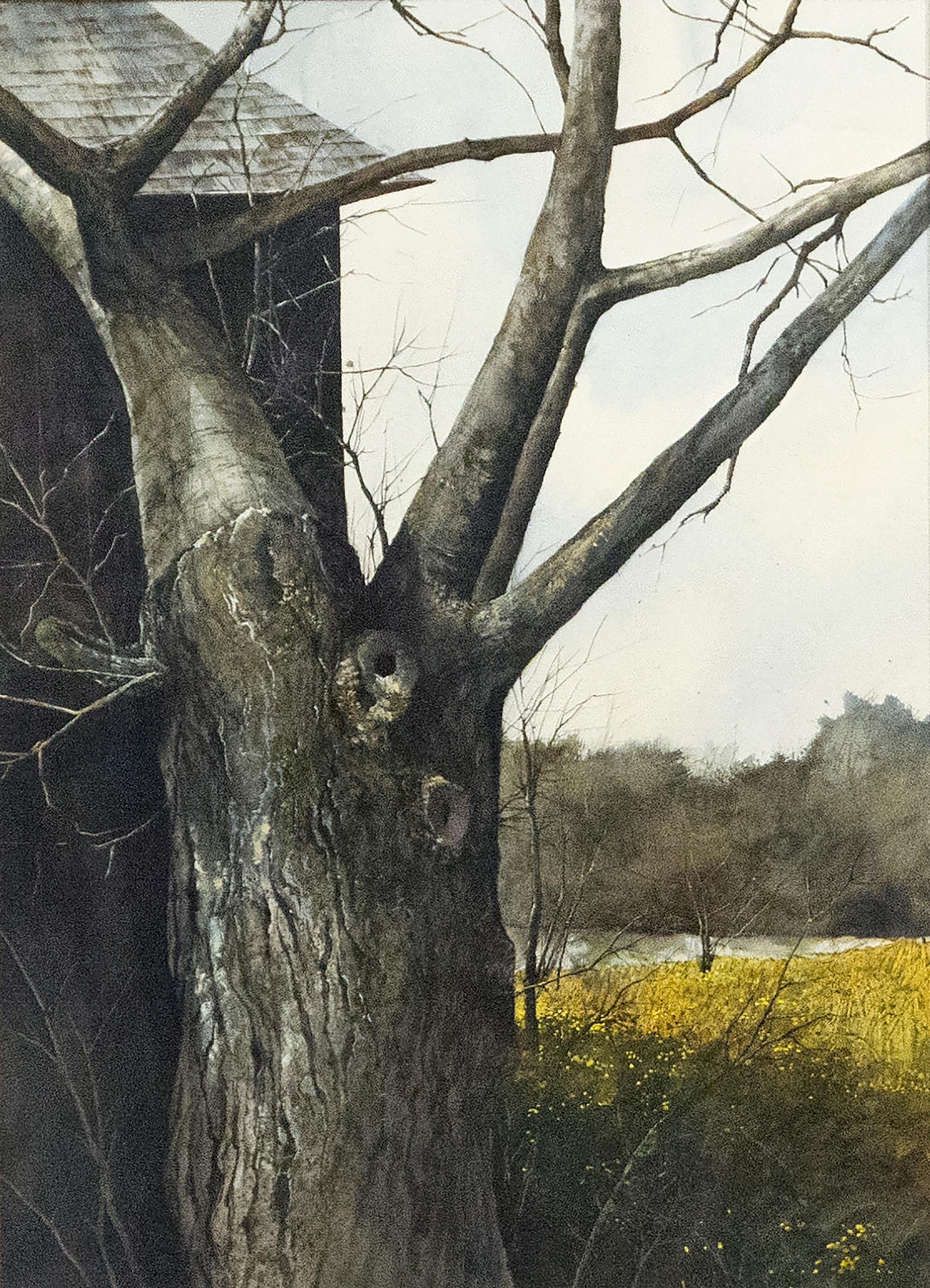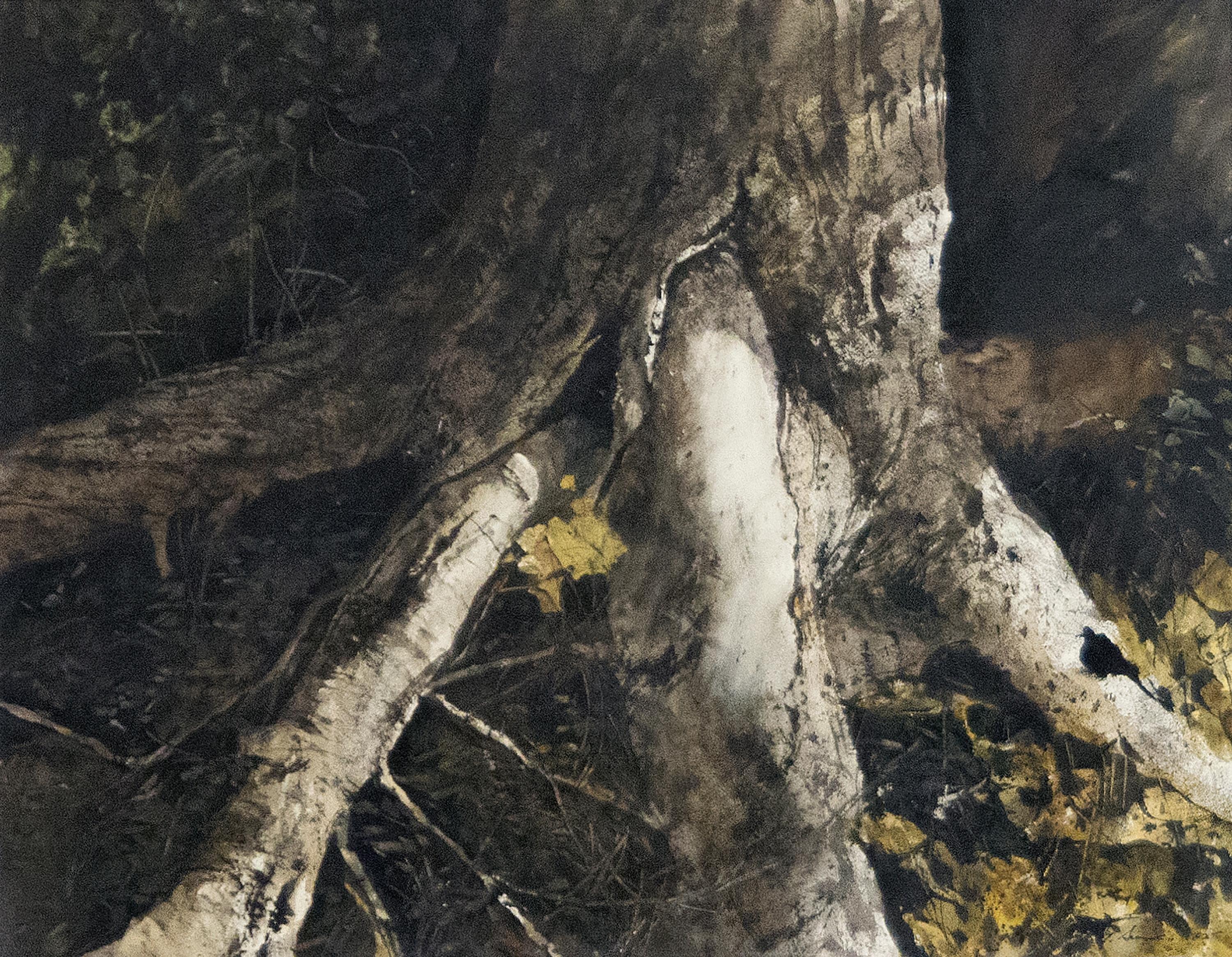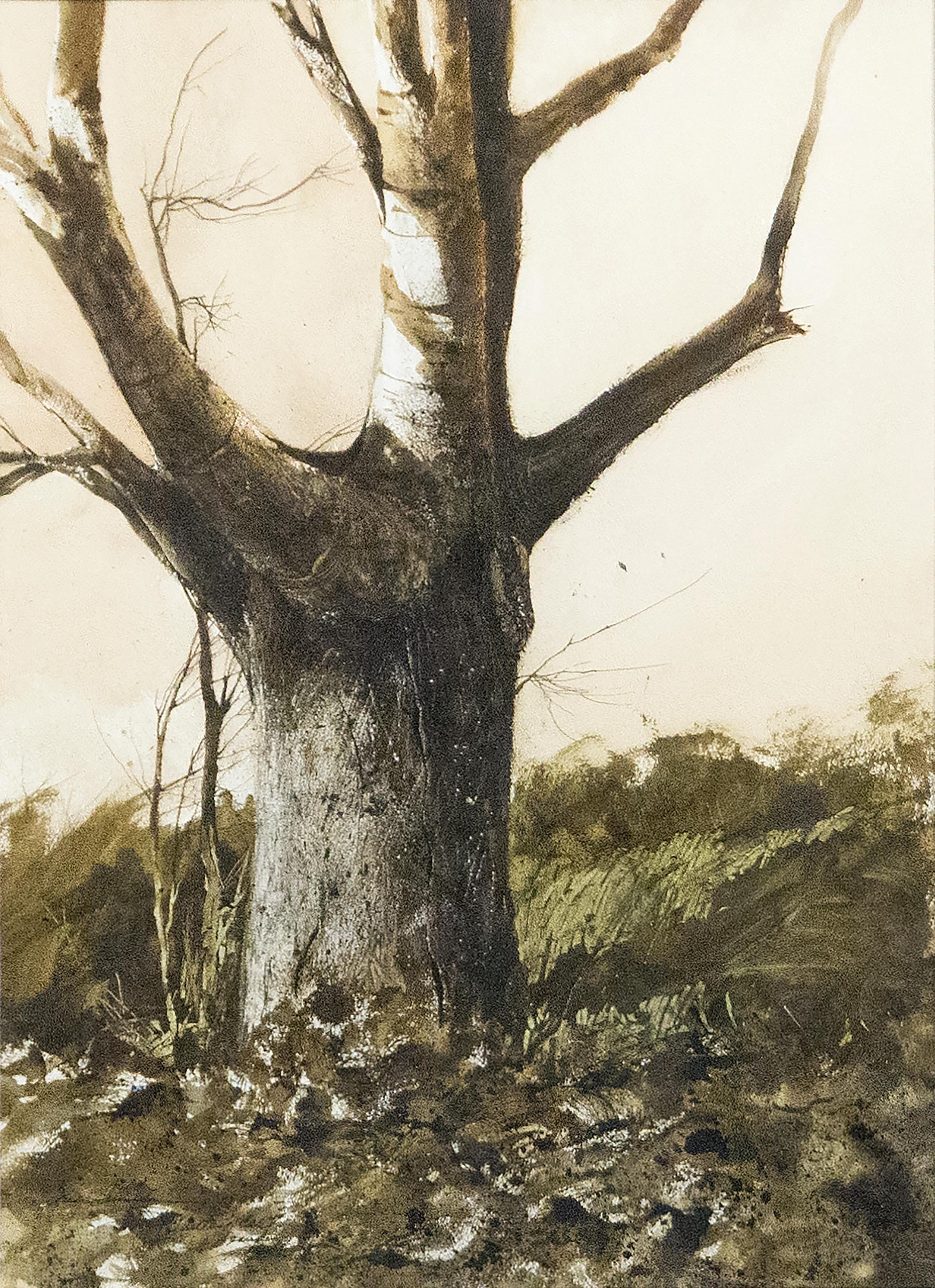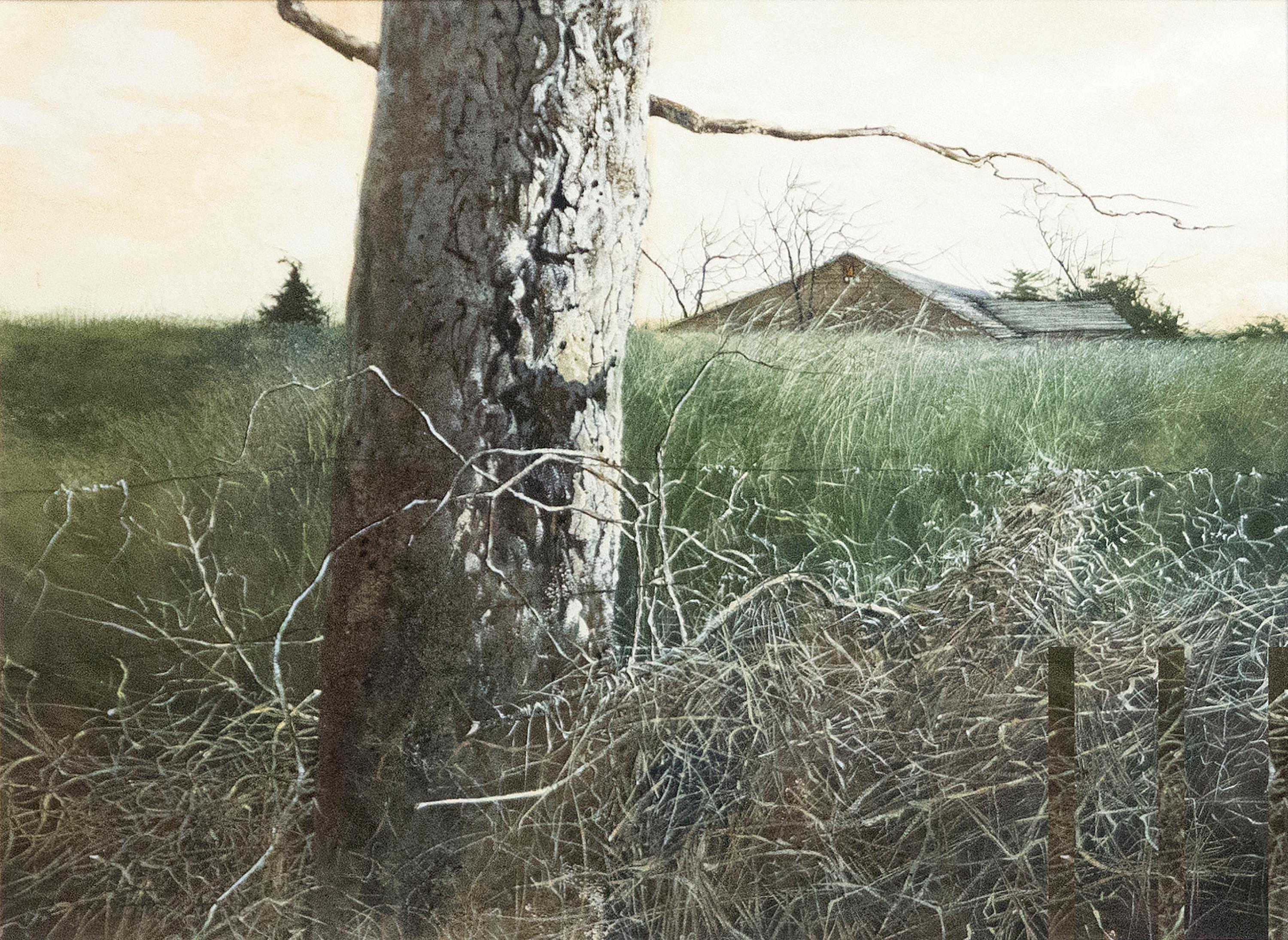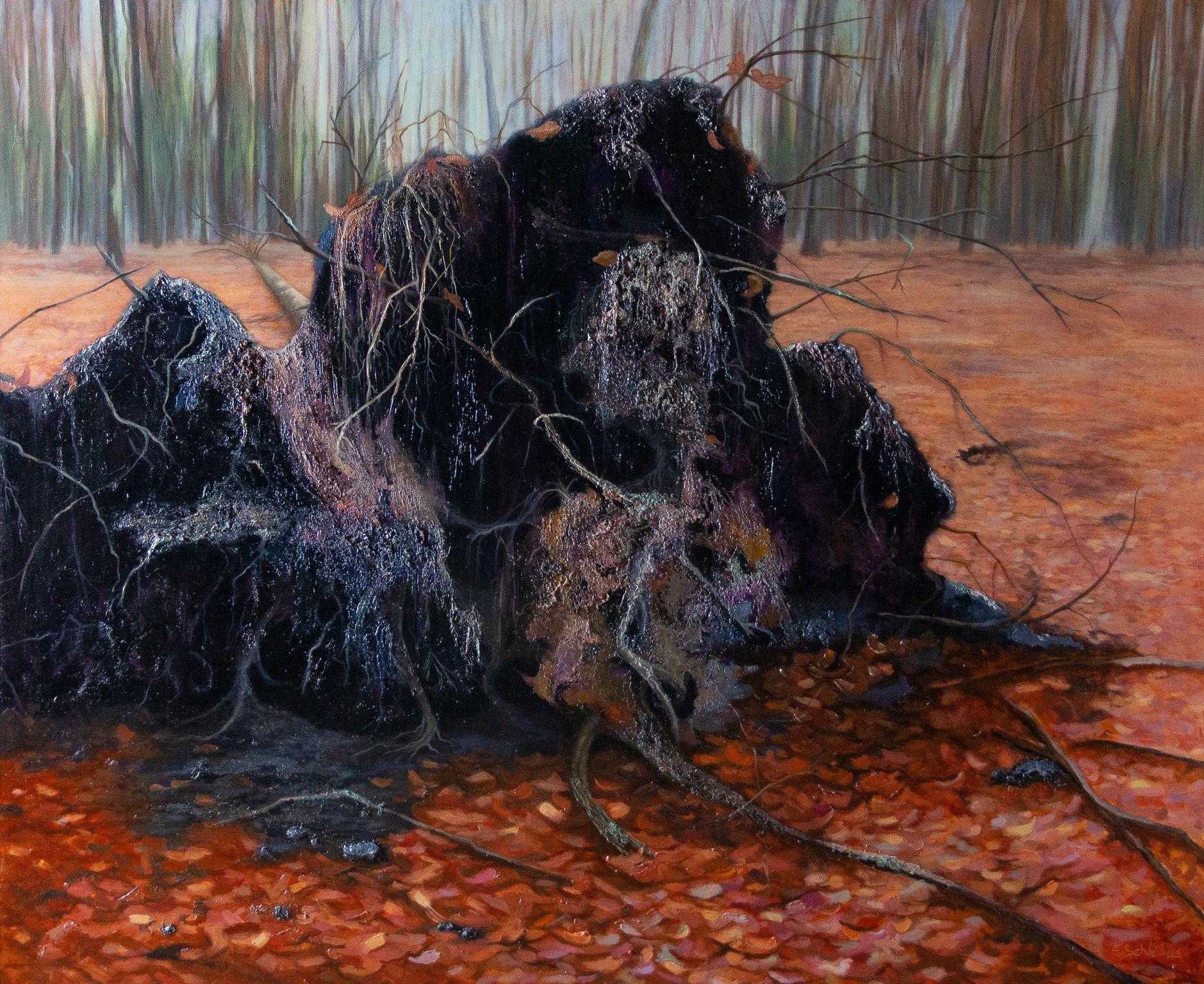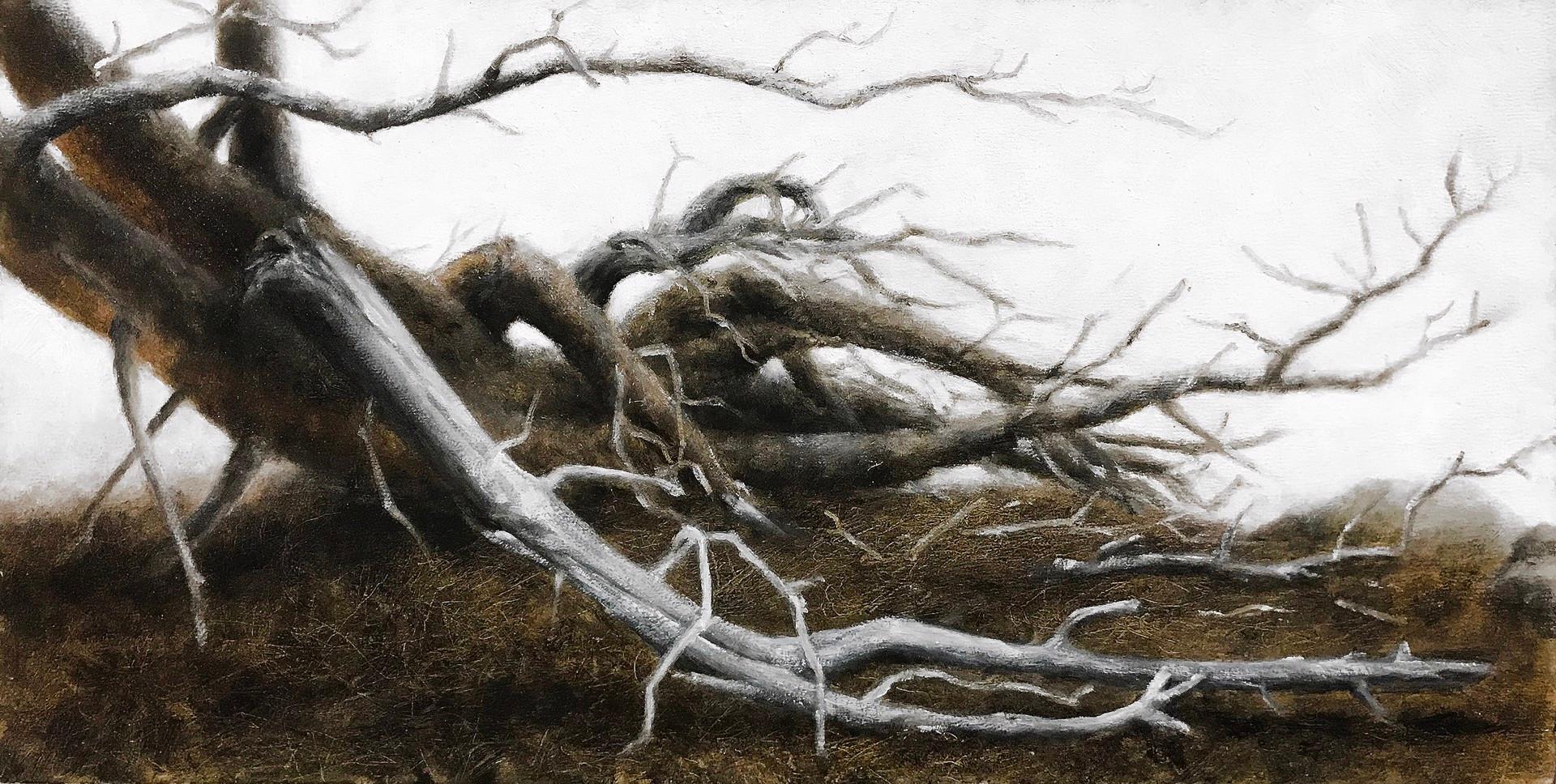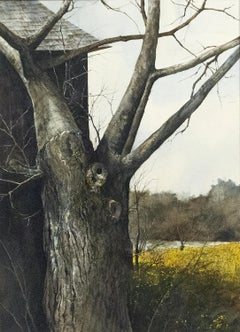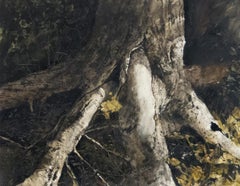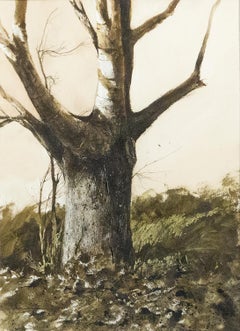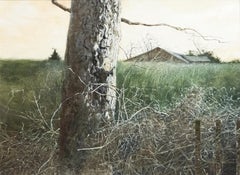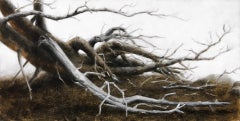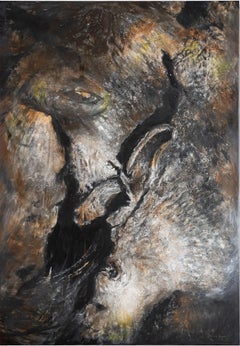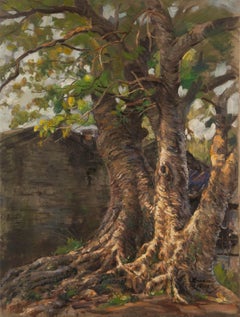Items Similar to Hollow Tree, Hollow Trunk
Want more images or videos?
Request additional images or videos from the seller
1 of 8
SUMIDA, GREGORYHollow Tree, Hollow Trunk1972
1972
$12,500
£9,483.26
€10,873.11
CA$17,806.99
A$19,324.97
CHF 10,167.97
MX$234,798.93
NOK 127,301.09
SEK 119,865.56
DKK 81,184.62
About the Item
A painting by Gregory Sumida. “Hollow Tree, Hollow Trunk” is a landscape painting, watercolor on pressed board in an earth-tone palette by American artist Gregory Sumida. The artwork is signed in the lower left, “G. Sumida 72”.
Gregory Sumida is a painter and draftsman highly skilled in different media who, over a 50-year career, has explored a wide variety of subjects from landscapes and scenes of rural America to depictions of the Old West and portraits. Gregory Sumida: Americana Watercolors consists of watercolors Sumida made in the early 1970s of rural scenes mostly in the countryside around his hometown of Stockton, California. Following in the tradition of Andrew Wyeth, an artist Sumida greatly admires, he captured through his own interpretive lens a slice of Americana given, by his intensity of detail and superb technical control of earth tones, an atmospheric, autumnal, even nostalgic mood.
Private Collection:
Private Collection, Arizona
- Creator:SUMIDA, GREGORY
- Creation Year:1972
- Dimensions:Height: 30 in (76.2 cm)Width: 22 in (55.88 cm)
- Medium:
- Movement & Style:
- Period:
- Condition:
- Gallery Location:Palm Desert, CA
- Reference Number:Seller: 145451stDibs: LU939599842
About the Seller
4.8
Recognized Seller
These prestigious sellers are industry leaders and represent the highest echelon for item quality and design.
Established in 1996
1stDibs seller since 2011
113 sales on 1stDibs
Typical response time: 8 hours
- ShippingRetrieving quote...Shipping from: Palm Desert, CA
- Return Policy
Authenticity Guarantee
In the unlikely event there’s an issue with an item’s authenticity, contact us within 1 year for a full refund. DetailsMoney-Back Guarantee
If your item is not as described, is damaged in transit, or does not arrive, contact us within 7 days for a full refund. Details24-Hour Cancellation
You have a 24-hour grace period in which to reconsider your purchase, with no questions asked.Vetted Professional Sellers
Our world-class sellers must adhere to strict standards for service and quality, maintaining the integrity of our listings.Price-Match Guarantee
If you find that a seller listed the same item for a lower price elsewhere, we’ll match it.Trusted Global Delivery
Our best-in-class carrier network provides specialized shipping options worldwide, including custom delivery.More From This Seller
View AllTree with Bare Branches
Located in Palm Desert, CA
A painting by Gregory Sumida. “Tree with Bare Branches” is a landscape painting, watercolor on paper in an earth-tone palette by American artist Gregory Sumida. The artwork is signed...
Category
Late 20th Century American Modern Landscape Paintings
Materials
Watercolor
Exposed, Uprooted
Located in Palm Desert, CA
A painting by Gregory Sumida. “Exposed, Uprooted” is a landscape painting, watercolor on paper in an earth-tone palette by American artist Gregory Sumida. The artwork is signed in th...
Category
Mid-20th Century Contemporary Still-life Paintings
Materials
Watercolor
Tree Study, Whittier, CA
Located in Palm Desert, CA
A painting by Gregory Sumida. “Tree Study, Whittier, CA” is a landscape painting, watercolor on watercolor board in an earth-tone palette by American artist...
Category
Mid-20th Century American Modern Landscape Paintings
Materials
Watercolor
Immutable Torso
Located in Palm Desert, CA
A painting by Gregory Sumida. “Immutable Torso” is a landscape painting, watercolor on watercolor board in an earth-tone palette by American artist Gregory Sumida. The artwork is sig...
Category
Mid-20th Century American Modern Landscape Paintings
Materials
Watercolor
Approaching Storm, New Branches
By Gregory Sumida
Located in Palm Desert, CA
A watercolor by Gregory Sumida. "Approaching Storm, New Branches" is a watercolor on watercolor board, executed in dark browns, greens and blues and depicting a tree trunk with bare ...
Category
1970s American Realist Landscape Drawings and Watercolors
Materials
Watercolor, Board
Supported
By Gregory Sumida
Located in Palm Desert, CA
A watercolor by Gregory Sumida. "Supported" is a watercolor on watercolor board executed in earthy browns, blues, greens, yellows and white and depicts a cut tree trunk with dry, bar...
Category
1970s Landscape Drawings and Watercolors
Materials
Watercolor, Board
You May Also Like
Fallen Tree Stump- 21st Century Landscape Painting of a Fallen Tree in a Forest
By Esther Schlebos
Located in Nuenen, Noord Brabant
The Artist mission:
“Depicting the overwhelming nature in paint is a permanent challenge, which keeps me amazed again and again.
Esther Schlebos won "The Prix de Norvège" for her l...
Category
2010s Contemporary Landscape Paintings
Materials
Oil, Wood Panel
Ponderosa - Mountain Pine Beetle Outbreak
By Lisa Lebofsky
Located in Denver, CO
Ponderosa - Mountain Pine Beetle Outbreak
Category
21st Century and Contemporary Landscape Paintings
Materials
Panel, Oil
"Root, " Acrylic on Canvas
By Bruno Surdo
Located in Chicago, IL
Chicago-based fine art painter Bruno A. Surdo is classically trained in drawing and oil painting in the tradition of Renaissance masters. With strong command of the human form, Surdo...
Category
21st Century and Contemporary Expressionist Still-life Paintings
Materials
Acrylic, Mixed Media
Guiwen Liang Landscape Original Oil On Canvas "Old Tree"
Located in New York, NY
Title: Old Tree
Medium: Oil on canvas
Size: 31 x 23.5 inches
Frame: Framing options available!
Condition: The painting appears to be in excellent condition.
Year: 2015
Artis...
Category
21st Century and Contemporary Landscape Paintings
Materials
Canvas, Oil
20th Century Oil - Fallen Tree
Located in Corsham, GB
An earthy, rustic 20th Century oil showing a fallen tree lying on the bank of a forest stream. The artist has used flat square brush strokes to create...
Category
21st Century and Contemporary Landscape Paintings
Materials
Oil
$391 Sale Price
20% Off
Dead tree
By Simon Kozhin
Located in Zofingen, AG
An old tree already dead overgrown with moss in the forest thicket. The tree trunk has already been eaten by a bug, and its picturesque texture with a variety of tonal nuances attracted me as a researcher. I watch...
Category
Early 2000s Realist Landscape Drawings and Watercolors
Materials
Charcoal, Magazine Paper
$4,879 Sale Price
20% Off
More Ways To Browse
Vasil Papkov
Vilhelms Purvitis
Vintage California Poppy
Vintage Embalming
Vintage Western Painting
W Richards Paintings
Water Towers Painting
Weeping Willow Art
William Payne
Wolf Kahn Oil Painting
17th Century Village Paintings
1920s Painting Green
19th Century Painting Norfolk
19th Century Western Paintings
Alfred Banner
Alfred Godchaux
Alfred Henry Vickers
Anders Gisson
